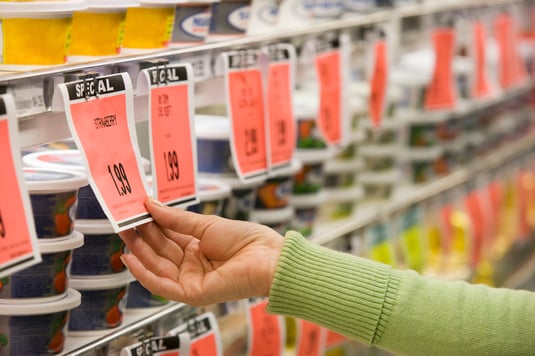 With inflation at a 40-year high and grocery costs up close to 11% compared to 2021, saving money at the store has become a priority for many. However, when trying to save money at the store, many individuals cut back on the pricier yet healthier items, such as fruits, vegetables, and lean protein sources. But you don’t have to do that! Here are some tips and tricks for maintaining a healthy diet while shopping smart and saving money at the store.
With inflation at a 40-year high and grocery costs up close to 11% compared to 2021, saving money at the store has become a priority for many. However, when trying to save money at the store, many individuals cut back on the pricier yet healthier items, such as fruits, vegetables, and lean protein sources. But you don’t have to do that! Here are some tips and tricks for maintaining a healthy diet while shopping smart and saving money at the store.
- Have a grocery store game plan. Make a list of the meals and snacks you plan to eat throughout the week and the foods you will need to make them. Sticking to this list will help prevent you from buying things you do not need, which often results in wasted food and money.
- Join your store's loyalty or rewards program. Often these programs are free and automatically apply savings at checkout, requiring minimal effort from you.
- Buy “in-season” and “local” fruits and vegetables when possible. Fruits and vegetables that are local or in season are typically cheaper to produce and ship, resulting in a lower price for the consumer compared to hard-to-find or out-of-season produce. See what produce is currently in season at the USDA website.
- Buy frozen. If you have freezer space available, purchase frozen fruits and vegetables without added salt or sauces. Typically frozen fruits and vegetables are just as healthy as fresh and are a fraction of the cost.
- Buy canned fruits and vegetables. When purchasing fruits, try to buy those that are packaged in 100% fruit juice. When purchasing vegetables, look for those that have “no salt added” listed on the label, or simply rinse prior to preparing/cooking to help wash off some of the salt added for preservation.
- Grow your own! Grow your own fruits, vegetables, and herbs to cut back on packaging costs.
- Buy fresh. Check the “sell by” or “best by” date to ensure you are buying the freshest items.
- Compare your options. Compare and contrast different sizes and brands to find the most cost-effective option. Looking at the “price per unit” can help you find the best deal.
- Buy in bulk. When you know a certain food or drink will get used, buy in bulk or purchase value- or family-sized items. For produce and meat, anything that isn’t used can be frozen for later use.
This blog was written by Lindsey Recker, MS, Registered Dietitian. To learn more about the NIFS bloggers, click here.

